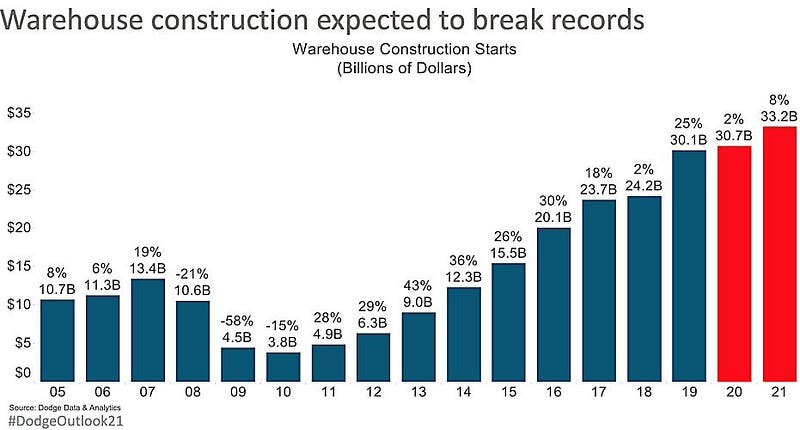A Site Unseen
A recent air quality ruling could create a vast commercial market for warehouse visibility technology.
A recent air quality ruling could create a vast commercial market for warehouse visibility technology.
Event: The South Coast Air Quality Management District (SCAQMD) recently approved Rules 2305 and 316, which attempt to reduce NOx and diesel emissions 💨 by regulating warehouses as “indirect” sources of emissions (Source: JD Supra). The Indirect Source Rule 2305 (ISR), a first-of-its-kind air district mandate, will impose new costs on warehouses and the Southern California supply chain, potentially testing legal boundaries of local authority to regulate “indirect sources” of emissions.
How it will work: SCAQMD’s points-based program will collect a “mitigation fee” from warehouse owners and operators of sites larger than 100,000 square feet. Operators are exempt if they earn sufficient points from increased visits from zero- and near-zero-emissions (ZE and NZE) trucks. The historical truck volume will determine compliance with ISR requirements. As such, warehouse operators will need to track Truck Trips 🚚 by Class, Fuel Type, Dwell time for all trucks entering and exiting each warehouse gate.
The consequences: The companion Rule 316 requires warehouse owners and operators that fail to meet the minimum points criteria to pay “mitigation fees” that purport to reimburse SCAQMD for administrative costs associated with ensuring compliance with ISR. It’s projected that fees could range from 💸 $0.90 to $1.10 per square foot each month the warehouse operator is not compliant with the regulation.
Who is impacted: The SCAQMD had jurisdiction over 4K warehouses in the greater Los Angeles area and Inland Empire. But other air quality districts are eagerly looking at how this ruling will impact the use of EVs and how it will be inforced. ISR passed in May 2021; however, many other regions could approve similar orders if ISR works.
My thesis: ISR (and future similar rulings) serves as a catalyst and commercial use case for warehouse operators to adopt technology to acquire essential data to improve operations.
Logistics boom contributing to the climate problem: The increase in e-commerce demand has been a driving factor for the growth in warehouse and fulfillment centers across the US. This trend has increased the number of diesel trucks on the road, contributing to carbon emissions.
The warehouse has been a black box of data: Despite the emergence of more visibility tools throughout different points in the supply chain, the warehouse has remained opaque. Many of the Transportation Management Solutions (TMS) and freight visibility tools have been adopted because of the federal Electronic Logging Device (ELD) mandate. This 2018 ruling has been a tailwind in growth for companies like Platform Science, KeepTrucking, Samsara, and project44. But freight visibility for shippers usually stops when trucks reach the fulfillment centers.
Recommendation: This ruling makes a commercial case for warehouse owners and operators to adopt site visibility systems. The two primary types of site visibility solutions are load dock/gate visibility and yard management tools. For example, the two platforms could look something like the following:
Warehouse Dock Door and Gate Visibility tools 👀 (Invest): Warehouse operators could desperately use a full-stack (hardware, AI/ML capabilities, UI with data reporting) vision-based gate visibility solution (Navtrac, Kargo, e.g.). The technology will identify and extract relevant data points from what types of commercial vehicles enter and leave an industrial facility. This data will be used for ISR compliance and help to improve operations.
Yard management platform (Track): The Dock Door and Gate visibility solutions will feed real-time transportation data into a suite of yard management solutions that improve operational efficiency. These features could include contactless driver check-in, dock door appointment scheduling, integration with 3rd party fintech solutions to managed accessorial or lumper payments, etc.






